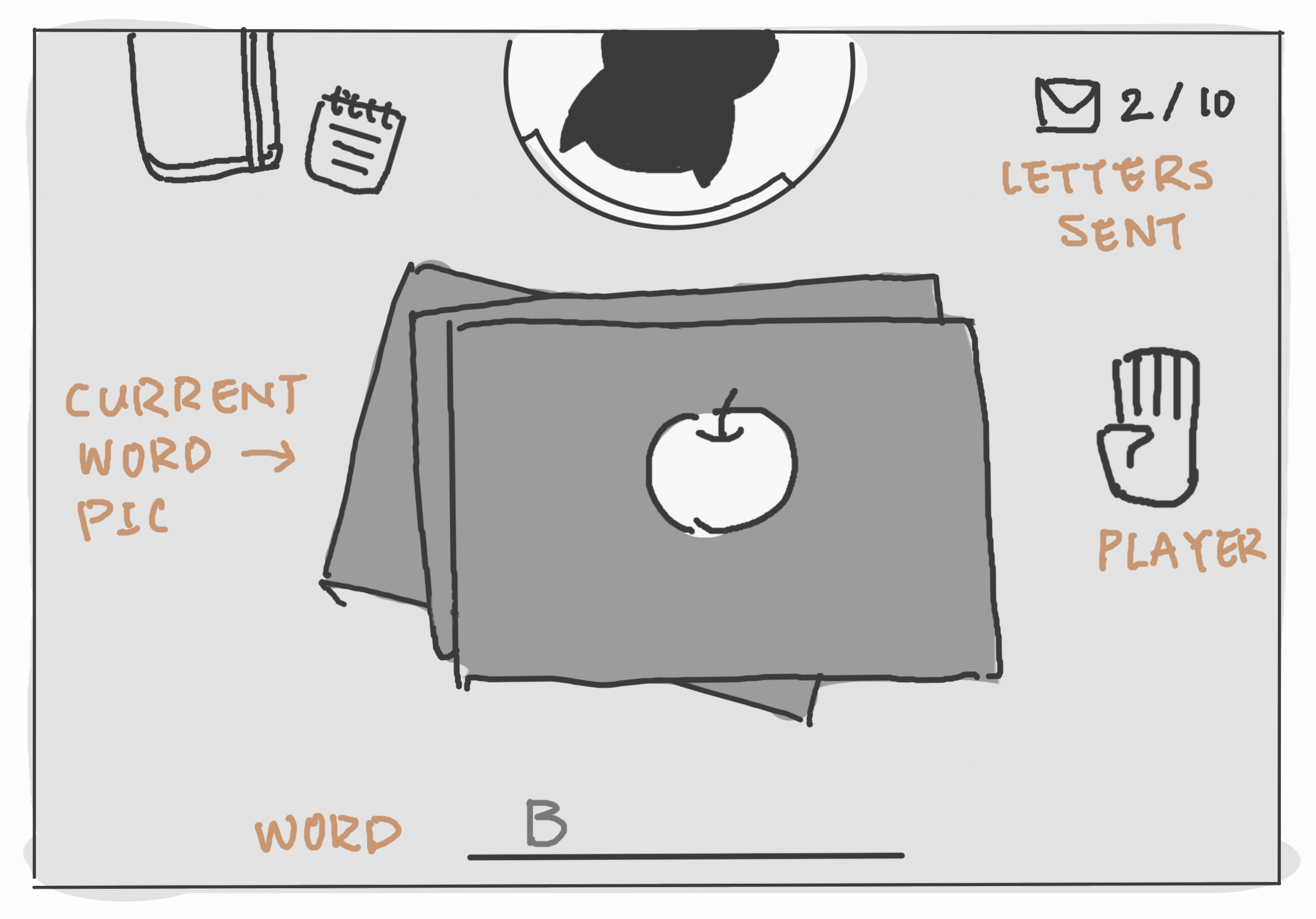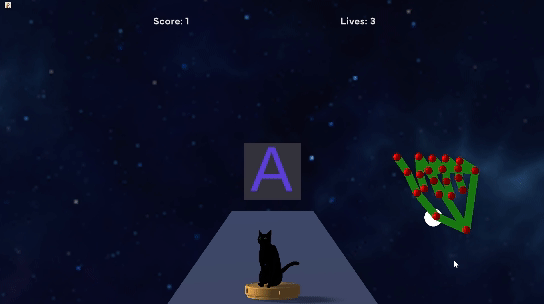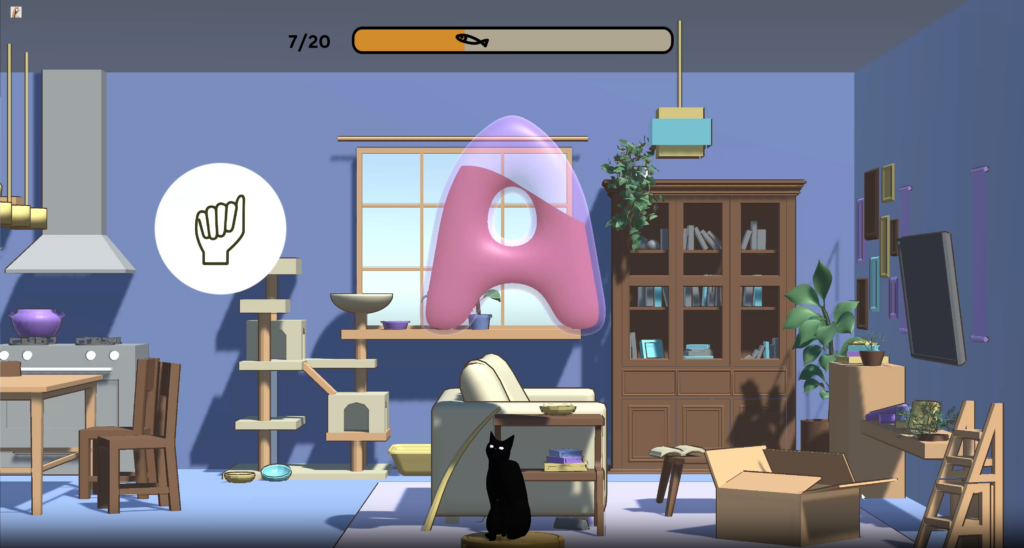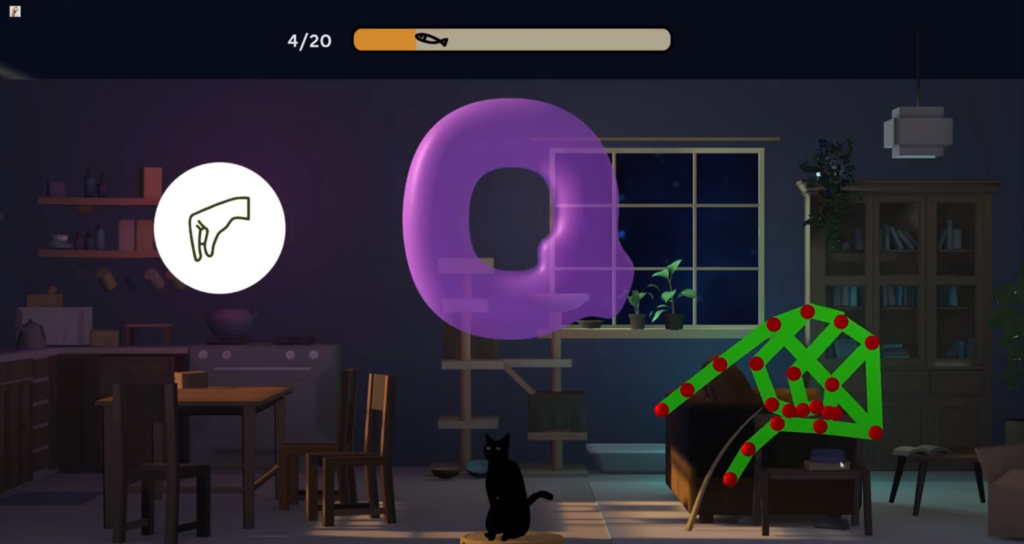Mini Game 3 Iteration
Spelling Sweep
Following last week’s challenge to finalize the concept for mini game 3, we convened and brainstormed a new idea called “Spelling Sweep.” This game features a top-down view of a table, where the player spells out the object shown on a piece of paper. If the spelling is correct, a cat stamps it with its paw, and a sweep robot clears the paper away. This concept meets several key requirements:
- It prioritizes the potential for data gathering, specifically measuring the reaction time differences when the same word is presented multiple times.
- It allows for the repetition of the same word, enhancing learning through reinforcement.
- The gameplay is designed to be simple yet rewarding, with incremental awards to keep players engaged.
- We can choose words that are clear and minimize confusion.
Additionally, by primarily utilizing 2D art assets, we can easily expand the vocabulary included in the game.

We’ve developed a basic prototype of mini game 3 focusing on the core gameplay of spelling. Moving forward, we’ll keep developing the game by integrating more art assets.

Mini Game 2 Prototype
Here’s a simple prototype of our mini game 2.

Based on our new idea about mini game 3, we also updated our story background for the mini game 2. Instead of running on the actual street, we thought it could be more interesting if the cat just run with the robot inside a miniature on the sofa. So the whole setting will be in the same apartment room and our character doesn’t need to be jump around different environments. Here’s the modeling of the miniature environment.
Inspired by our new concept for mini game 3, we’ve also revised the storyline for mini game 2. Rather than navigating actual streets, we envisioned a more intriguing scenario where the cat runs with the robot within a miniature setup on the sofa. This change keeps the entire setting within the same apartment room, eliminating the need for our character to transition across different environments. Below is the model of the miniature environment we’ve designed.

Mini Game 1 Iteration
Environment Iteration
Last week, we received crucial feedback highlighting that the letters weren’t standing out against the background and the multitude of colors was somewhat distracting. In response, we’ve adjusted the lighting and colors, opting for a darker background to make the foreground pop. Additionally, we found that having the window directly behind the letters was a distraction, so we’ve shifted its position. Sound effects have been incorporated, and we’ve fine-tuned other elements such as camera depth to enhance the overall experience.


Half Feedback
This week, considerable time was devoted to refining our half presentation slides and rehearsing. To enhance aesthetics, we composed the slides in Adobe Illustrator, then transferred them to Google Slides before exporting to a PPTX file. The challenge with this pipeline is the inefficiency in iterating based on new feedback, as it depends on one individual for final adjustments. For the final presentation, adopting a more efficient pipeline will be necessary. Key lessons learned also include the importance of rehearsal in advance and thorough preparation.
Feedback from our client on the half presentation primarily had four areas:
- Being able to output reaction time, accuracy, and having the code setup such that a future grad student were to go into the code and extract other behavioral measures using the landmarks easily would be amazing.
- Having a group play testing and examining the output towards the end of the project would be nice, and would certainly help for the paper on this topic (hopefully starting on it this summer). Wild idea: we can make our play testing a fun/simple competition.
- Really interesting questions about generalisation re: race/ethnicity, hand size etc. Interesting point to make the game accesible to all, but also an interesting research question about how well the AI is able to generalize.
- Could consider whether participants want to turn the hint option on or off.